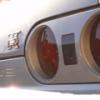DR30 and turbo bits for sale
Announcements
-
Similar Content
-
Latest Posts
-
By TeslaDriver28387 · Posted
Hi guys, I was in Sydney and encountered an aggressive, sadistic Uber driver which I was the passenger. Should I report him and does uber acutally do anything if I report, I know that Uber mentions that they take dangerous driving seriously etc.... What happened in the car First got into the car, thought nothing of it at first when he honked at an illegally double-parked car blocking traffic. But then, as the ride progressed I noticed that he aggressively honked and tailgated at slower cars despite them being close to the speed limit. Final straw was that he went to harass a Camry and honked at him almost every time the camry slowed down, even leaned on the horn while he was waiting for pedestrians to cross before he was allowed to turn left. Also continously honked and flashed lights while camry was parallel parking. What would you do in the situation as an Uber passenger? Thanks -
And not one multimeter was frightened in the process!
-
Figured it out. Very suprisingly, both headlight bulbs went out and the rear one went out as well. Which is weird because the rear one didn't look broken. I decided to swap bulbs jsut incase and it was infact broken lol
-






Recommended Posts
Create an account or sign in to comment
You need to be a member in order to leave a comment
Create an account
Sign up for a new account in our community. It's easy!
Register a new accountSign in
Already have an account? Sign in here.
Sign In Now